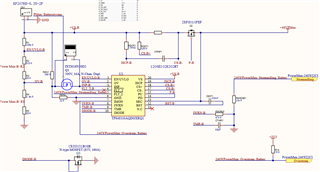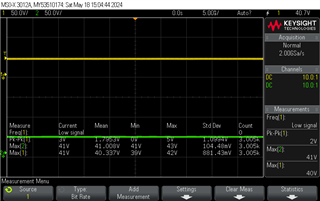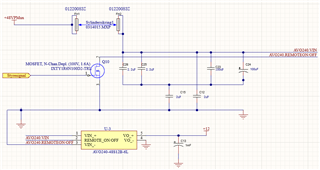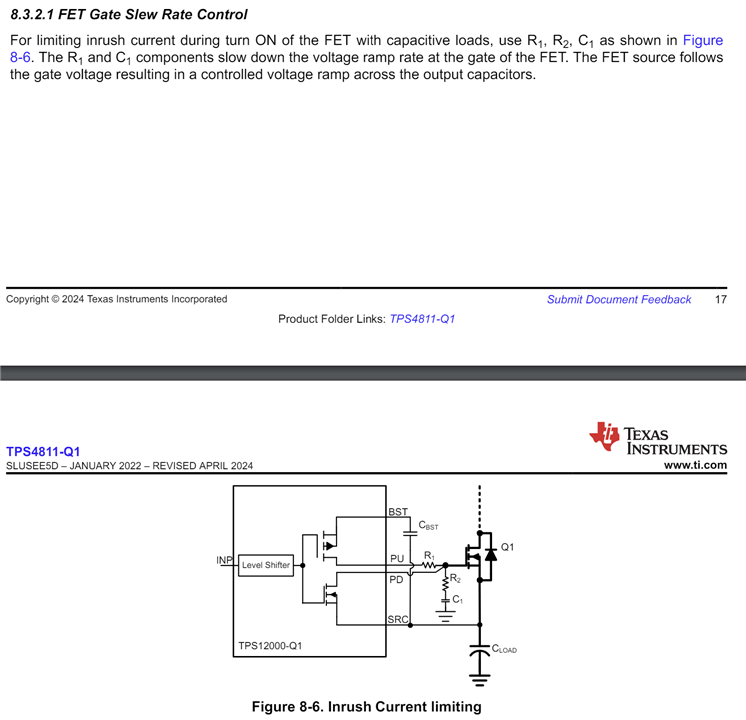Hello,
I have attempted to use the TPS48110-Q1 chip for one of my pcb designs for a power supply. However, I am having difficulties getting it to work as expected. The PU/PD pins never go high and so they never turn on the FET that opens to the main power rail. Basically, the system never starts up as the FET never open from the intake. This is because the PU/PD tracks are continuously measured at appx. ground (0V), and never increase. The Charge Pump keeps jumping at around 11.7V, regardless of input voltage, so that part seems to be working fine.
My operating range is 35V to 48V, with 1060W max effect. I have attempted many different ways to troubleshoot, including desoldering certain components.
Results of measurement during troubleshooting:
I have verified that EN/UVLO is within the range 1.2V to 2V (measured at 1.47V with 42V input).
INP pin is also within range 1.6V to 2V (measured at 1.68V).
OVP was measured at 0.974V, which should also be within acceptable range, as it is still below 1.1V which is the OVP_threshold value.

I largely used the datasheet and MATLAB to calculate all the resistors and capacitors, but during my troubleshooting I discovered your Excel-sheet. I have double-checked my calculations with the Excel-sheet, and there are only very minor differences, that should not be the cause preventing system startup.
I've been trying to troubleshoot this for several days now, and unfortunately it's already implemented on a PCB, so I've had to desolder components to check. I completely removed the OV input by desoldering R3, and then just adding a 2.4k resistor from R2 to ground to connect the gap after removal. This essentially keeps the voltage divider at the same values, while shorting OV to ground as recommended by the data sheet when not in use - but this had no effect.
I'm scratching my head trying to figure this out, and since I'm essentially out of ideas for troubleshooting now, I decided to reach out here, where I might get more experienced assistance in order to get my system to work. Please let me know if there is anything missing that would help diagnose the issue.
Vin,min = 35V
Vin,nom = 40V
Vin,max=55V
Max effect = 1060W, current depends on operating voltage (30.3A for 35V input, 26.5A for nominal input).
Auto-retry. Transients allowed for 1ms.
Hopefully somebody has some insights.









